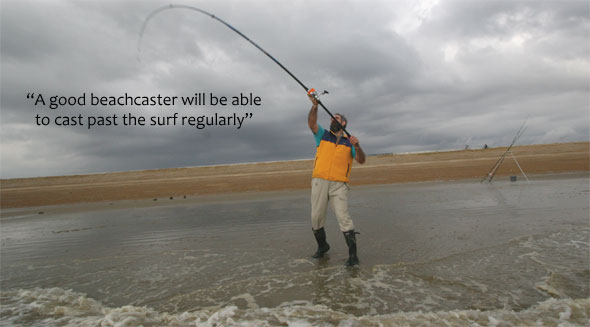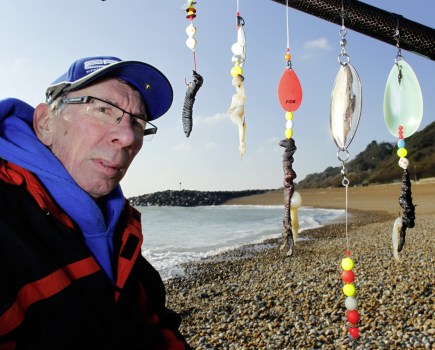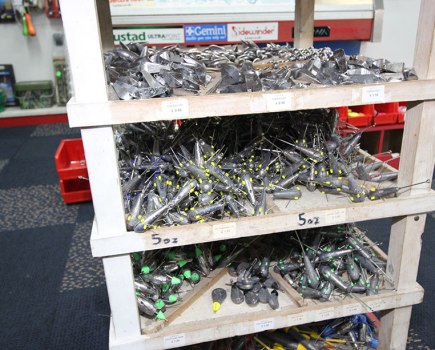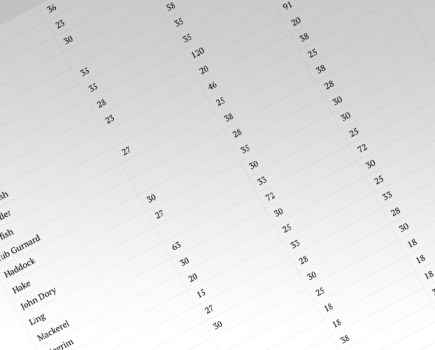At the very heart of shore angling success is the ability to cast a bait out past the raging surf, and keep it there. For many, casting is a major stumbling block, so a later chapter will deal with the styles and techniques needed to attain greater distances. For now, let’s assume your casting skills are average – by that I mean you can cast a bait 100 yards with some regularity. Standard tackle for clear beachcasting is 12lb to 20lb lines and 6oz leads.
Most of the fish species found around our shores are caught by casting a baited terminal rig and sinker (or lead) as far out into the deeper water as possible, or with accuracy to features like sand banks, gulleys and rocky outcrops. Specialised tackle and techniques are required for clean, mixed and rough ground, but in the main casting distance is achieved by having balanced tackle. This means a compatible rod and reel and a terminal rig that gets the bait out with the minimum resistance from the wind and tide.
When fishing over clean ground (sand, shingle or mud) it is generally the longest casts that bring the best results. Some species that swim close to the breakers, like bass, flounder and sole, can be caught with an accurate short cast, but in the main it is distance that matters, especially when the wind and tide conspire to make casting and keeping your gear in position as difficult as possible. The angler who learns to cast long always has the option of fishing short when conditions dictate.
Casting over medium or rough ground requires a strong outfit. Lines between 18lb and 30lb breaking strain are preferred, teamed with large-capacity reels to cope with the heavy line and strong rods needed to cast heavy leads, or drag tackle and fish from snags.
Results will depend on several factors, but predominantly the chosen venue and the time of year it is fished. There are no captive fish in the sea, so the seasons and the weather can present you with either a fish-packed venue or a fishless desert.
Because we cannot see under the surface of the sea, and have active imaginations, we will often fish when conditions are against us. Far better to seek out local knowledge – this can improve results enormously and is the biggest single advantage the sea angler can gain.

Try to find out about any venue before you fish there. Local clubs, tackle shops and newspaper angling reports are an excellent source of information. You should be able to find out about high and low tide times and strength (height), the best baits and times to fish, the type of sea bed, the best wind direction, and the effects the weather has on the fishing. You’ll learn about what species to expect, and benefit from local knowledge – for example, if you intend fishing from a pier, is there is a landing net available?
It’s best to check out a new venue over low water. The exposed sea bed will reveal the deepest and clearest ground to fish. Look for features, which can be obvious (a rocky outcrop or weedy reef) or more subtle (a change of depth in the sand). From a rocky or cliff mark, look for access to the sea, a safe place to land fish and, vitally important, your exit point on a flood tide. If you are fishing a remote venue, especially at night, never go alone. When fishing a completely new venue, try mentally mapping out the sea in front of you in a grid system (left). This is especially effective over rough ground. Check out each grid for snags and likely fish-holding spots. Don’t just cast at random, and don’t cast back to the same spot if you lose tackle – only if you get a bite.
TOP TIPS
- To remove weed from the line without having to put the rod down and stop reeling, hit the side of your rod with your palm sharply several times. This will clear the obstruction and allow you to carry on retrieving.
- A stable aluminium tripod with a sliding butt cup is a positive aid to keeping your rod safe in a rough, weedy sea because it can be used to raise your rod tip high above the surf, thus preventing weed and swell from pulling the lead free, or the rod over. Avoid small tip rings when fishing a weedy sea because these will jam with a weeded leader knot.
- If you arrive at a new venue at high water it’s a good idea to cast a plain lead where you are intending to fish and then retrieve it slowly. This can reveal any contours, ridges and rocks.
- Take care when reeling in large clumps of weed, and do not put the strain directly on the reel. Lift the rod, pulling the weed in, and then reel as you lower the rod to take up the slack. This is known as ‘pumping’ and is an easy way to retrieve heavy weights. An alternative is to walk backwards and then reel in as you move forwards.
- Line diameter has a big effect on your casting range and the control of tackle in wind and tide. A low-diameter line will oppose tide and wind less than a heavier one. A line diameter between 0.30mm (12lb) and 0.38mm (18lb) is reckoned to be the most effective for clean beach fishing at long range. If choosing braid, use a line of the same breaking strain as you would mono. This is a far finer diameter (0.06mm), and explains why braid casts particularly well when used on a fixed-spool reel.








